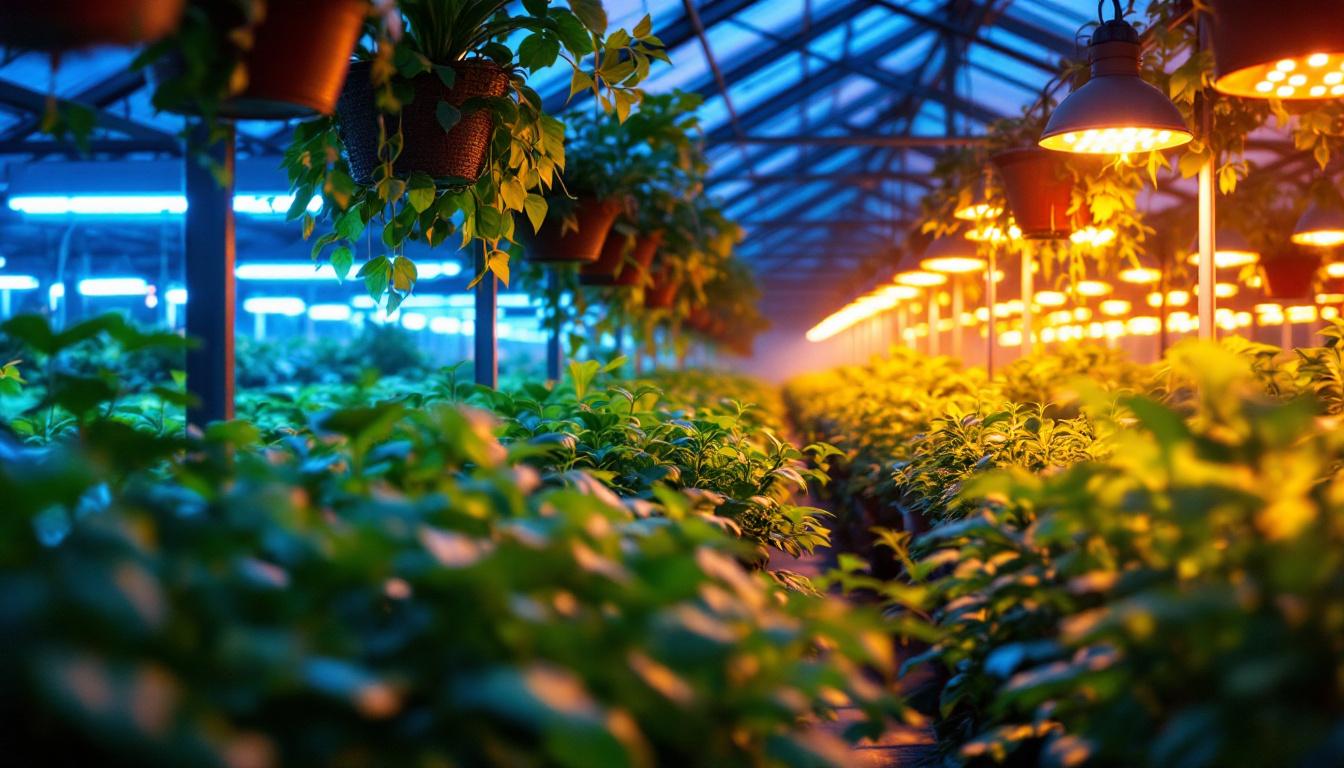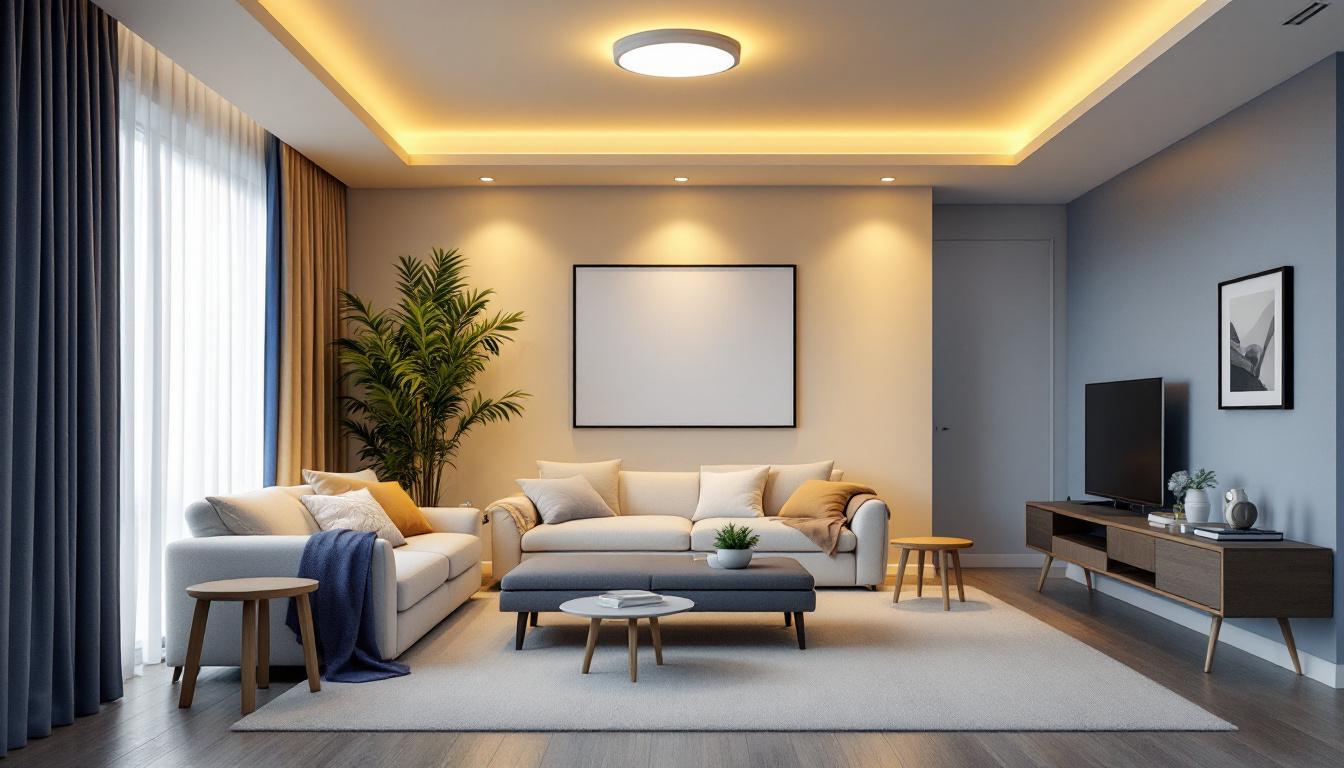
Lighting contractors play a pivotal role in ensuring that spaces are illuminated effectively and efficiently. As the demand for energy-efficient solutions continues to grow, the importance of understanding various lighting technologies becomes paramount. One such technology that has gained significant traction is greenhouse lighting. This article will delve into how greenhouse light can enhance efficiency for lighting contractors, exploring its benefits, applications, and the future of this innovative lighting solution.
Greenhouse lighting refers to the specialized lighting systems designed to support plant growth in controlled environments. These systems are not just about providing light; they are about creating optimal conditions for photosynthesis, which is crucial for healthy plant development. The use of greenhouse lights has expanded beyond traditional horticulture and is now being integrated into various commercial and residential applications. As urban gardening and indoor farming gain popularity, understanding the nuances of greenhouse lighting becomes essential for both hobbyists and professionals alike.
Lighting contractors must familiarize themselves with the different types of greenhouse lights available, including LED, fluorescent, and high-intensity discharge (HID) lights. Each type offers unique benefits and challenges, making it essential for contractors to assess the specific needs of their clients before recommending a solution. For instance, the choice of lighting can influence not only plant growth but also energy consumption and operational costs, which are critical factors for commercial growers aiming to maximize their return on investment.
To appreciate the efficiency of greenhouse lighting, it is vital to understand the science behind it. Plants require specific wavelengths of light for photosynthesis, primarily in the blue and red spectra. Greenhouse lights are designed to emit these wavelengths, ensuring that plants receive the necessary energy for growth. This targeted approach to lighting can lead to faster growth rates and higher yields, making it a game-changer in the agricultural sector.
Moreover, the intensity and duration of light exposure can significantly impact plant health. By utilizing greenhouse lighting, contractors can create customized lighting schedules that mimic natural sunlight, allowing plants to thrive even in less-than-ideal conditions. Advanced systems can even incorporate sensors and timers to adjust light levels based on the time of day or the specific growth stage of the plants, further optimizing the growing environment. This level of control not only enhances plant vitality but also contributes to more sustainable practices by reducing energy waste.
There are several types of greenhouse lights contractors can choose from, each with its own set of advantages and disadvantages. LED lights are becoming increasingly popular due to their energy efficiency and long lifespan. They produce less heat, reducing cooling costs in greenhouses. Additionally, LEDs can be tailored to emit specific light spectra, allowing growers to fine-tune their lighting to suit the particular needs of different plant species.
Fluorescent lights, while less efficient than LEDs, are still widely used for seedling propagation and vegetative growth. They provide a good spectrum of light and are relatively inexpensive. These lights are particularly effective in smaller setups, such as home greenhouses or indoor gardens, where budget constraints may be a concern. HID lights, on the other hand, are known for their high output and are often used in commercial greenhouses. However, they consume more energy and generate significant heat, necessitating additional cooling systems. Understanding the thermal dynamics of these lights is crucial for maintaining an optimal growing environment, as excessive heat can lead to plant stress and reduced productivity.
For lighting contractors, the adoption of greenhouse lighting systems offers numerous benefits. Understanding these advantages can help contractors position themselves as experts in the field, ultimately leading to increased business opportunities.
One of the most significant benefits of greenhouse lighting is its energy efficiency. LED technology, in particular, has revolutionized the way lighting is approached in greenhouses. These lights consume significantly less energy compared to traditional lighting systems, leading to lower operational costs for clients.
By promoting energy-efficient solutions, contractors can not only help their clients save money but also contribute to sustainability efforts. This alignment with eco-friendly practices can enhance a contractor’s reputation and attract environmentally conscious customers. Furthermore, many energy-efficient lighting systems come with long lifespans, reducing the frequency of replacements and maintenance, which can be a compelling selling point for contractors aiming to offer long-term solutions.
Greenhouse lighting systems are designed to optimize plant growth conditions. By providing the right spectrum and intensity of light, these systems can enhance photosynthesis, leading to healthier plants and increased yields. For contractors, this means that their clients can achieve better results, which can translate into repeat business and referrals.
Additionally, the ability to control light exposure allows for year-round cultivation, enabling clients to maximize their production cycles. This flexibility can be a significant selling point for contractors looking to expand their services. With advancements in smart technology, contractors can also integrate automated systems that adjust lighting based on real-time data, further enhancing plant health and optimizing energy use, which can be a game-changer in competitive markets.
Another advantage of greenhouse lighting is the ability to customize lighting systems to meet specific client needs. Contractors can assess the unique requirements of each greenhouse, including plant types, growth stages, and environmental conditions, to design tailored lighting solutions.
This level of customization not only enhances the efficiency of the lighting system but also positions contractors as knowledgeable professionals who can provide valuable insights and recommendations. Clients are more likely to trust contractors who demonstrate a deep understanding of their specific needs. Moreover, as the horticultural industry evolves with new plant varieties and cultivation techniques, contractors who stay informed about the latest trends and technologies can offer innovative solutions that set them apart from competitors, thereby solidifying their status as industry leaders.
While greenhouse lighting offers numerous benefits, it is essential for contractors to be aware of the challenges associated with its implementation. Understanding these challenges can help contractors navigate potential pitfalls and provide better service to their clients.
The initial investment for greenhouse lighting systems, particularly LEDs, can be higher than traditional lighting options. While the long-term savings on energy costs can offset this initial expenditure, some clients may be hesitant to make the switch.
Contractors must be prepared to educate clients on the long-term benefits and return on investment associated with greenhouse lighting. Providing case studies or examples of successful implementations can help alleviate concerns and encourage clients to invest in energy-efficient solutions.
Implementing greenhouse lighting systems requires a certain level of technical expertise. Contractors must be knowledgeable about electrical systems, lighting design, and plant biology to ensure successful installations.
Investing in training and education can help contractors stay ahead of the curve and provide high-quality service. Additionally, collaborating with lighting manufacturers and suppliers can offer valuable resources and support during the installation process.
Like any lighting system, greenhouse lights require regular maintenance to ensure optimal performance. Contractors should educate clients about the importance of routine checks and replacements to maintain efficiency.
Offering maintenance services can also create an additional revenue stream for contractors. By providing ongoing support, contractors can build long-term relationships with clients and position themselves as trusted partners in their clients’ success.
The landscape of greenhouse lighting is continually evolving, driven by advancements in technology and changing market demands. Staying informed about these trends can help contractors position themselves for future success.
Smart lighting technology is making its way into greenhouse applications. These systems utilize sensors and automation to adjust light levels based on environmental conditions, optimizing energy use and enhancing plant growth.
Contractors who embrace smart lighting solutions can offer clients cutting-edge technology that improves efficiency and reduces operational costs. This forward-thinking approach can set contractors apart in a competitive market.
As greenhouse technology continues to advance, the integration of lighting systems with other environmental controls, such as temperature and humidity management, is becoming more common. This holistic approach allows for better overall management of greenhouse conditions, leading to improved plant health and productivity.
Contractors who can navigate these integrated systems will be well-positioned to offer comprehensive solutions that address all aspects of greenhouse management. This capability can enhance their value proposition and attract a broader client base.
With increasing awareness of environmental issues, sustainability is becoming a critical consideration in the design and implementation of greenhouse lighting systems. Contractors who prioritize eco-friendly practices, such as using energy-efficient technologies and sustainable materials, can appeal to a growing segment of environmentally conscious clients.
Emphasizing sustainability not only aligns with current market trends but also positions contractors as responsible industry leaders. This commitment to eco-friendly practices can enhance brand reputation and foster customer loyalty.
Greenhouse lighting represents a significant opportunity for lighting contractors to enhance their service offerings and improve efficiency for their clients. By understanding the science behind greenhouse lighting, recognizing its benefits, and staying informed about industry trends, contractors can position themselves as experts in this evolving field.
As the demand for energy-efficient and sustainable solutions continues to rise, embracing greenhouse lighting technology can lead to increased business opportunities and long-term success. Contractors who invest in their knowledge and skills in this area will be well-equipped to meet the challenges of the future and provide exceptional value to their clients.
Ready to elevate your lighting solutions and harness the power of efficient greenhouse lighting? At LumenWholesale, we provide lighting contractors with superior, spec-grade lighting products at unbeatable wholesale prices. Our commitment to quality and affordability ensures that you can offer your clients the best value in energy-efficient and sustainable lighting solutions. Say goodbye to inflated markups and hello to hassle-free bulk buying with free shipping. Don’t miss out on the opportunity to enhance your service offerings with our extensive selection of top-quality lighting. Discover wholesale lighting at the best value today and light up your projects with confidence and convenience.

Discover the crucial role of low voltage wire splice connectors in lighting projects.

Discover the secrets of expert lighting contractors as they unravel the mysteries of the electrician’s wire snake.

Discover essential insights and practical tips for lighting contractors on installing ceiling flush LED lights.

Discover how ultra-thin flat panel LED lights are revolutionizing the lighting industry and giving contractors a competitive edge.